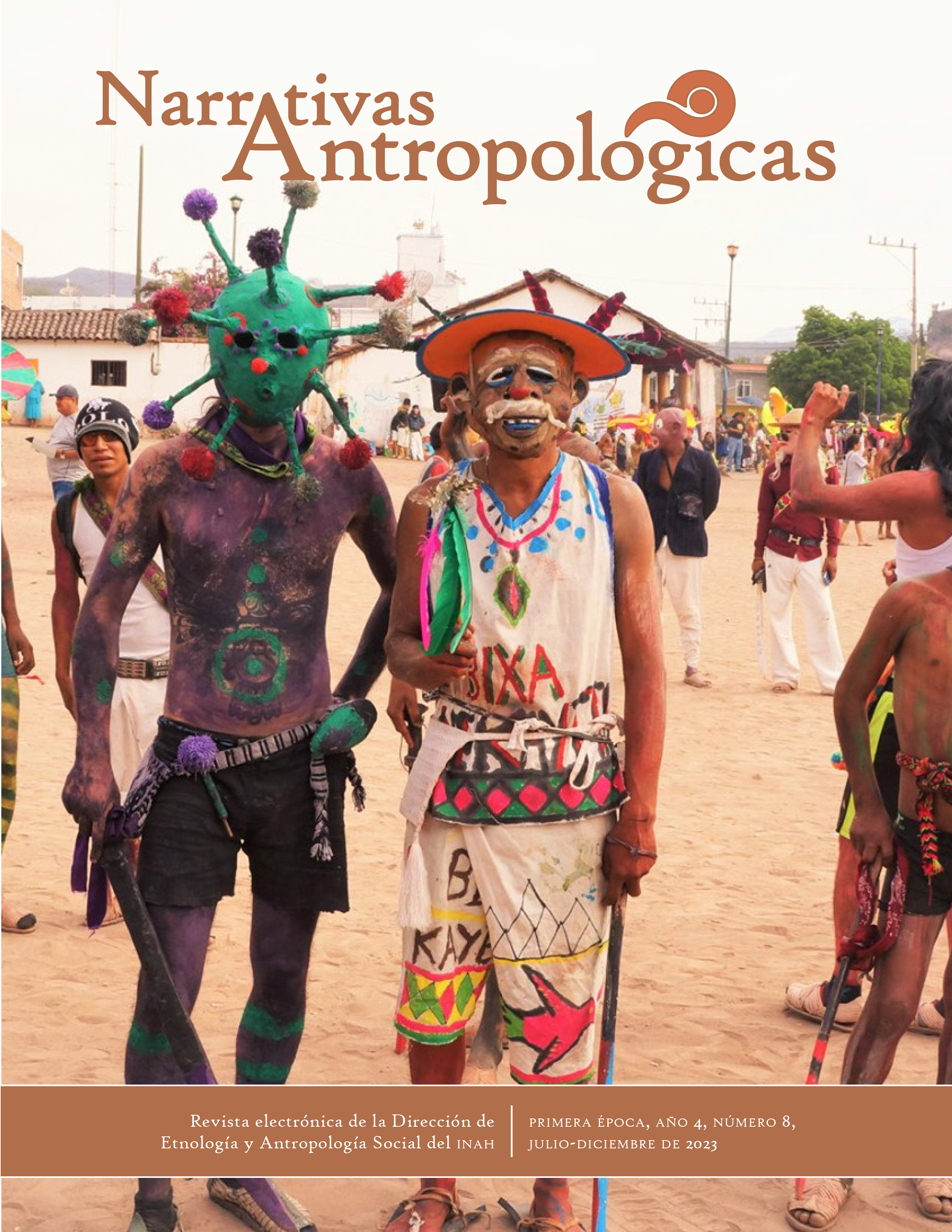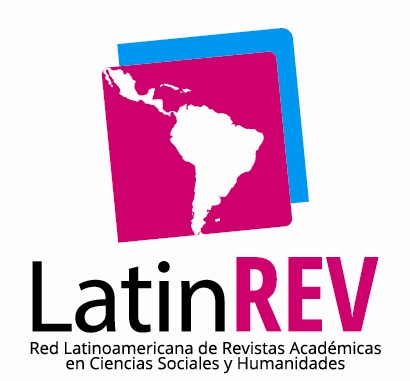Corpo-orality: a conceptual category of embodiment
Keywords:
corpo-orality, embodiment, anthropology or narratives, dialogicality.Abstract
Corpo-orality is a conceptual proposal that is presented as a dialogical synthesis between oral discourses and corporal discourses that found corporality in culture. This concept that I have rehearsed from 2012 until now, is supported by processes that are developed in oral narratives inherited from previous generations and that are embodied in the body, as the existential foundation of culture. Corpo-orality is characterized by the constant heterogeneity of styles and the plurality of voices, which is why it is not based on cultural repetitions, but rather on the mobility that is updated in the event, whether it is merely spoken or bodily. This article presents what have been the main influences on the conceptual conformation and also what are the fields of knowledge with which. I propose to article it in its constitution. I reflect on this conceptual category from its theoretical aspects and, at the same time, I raise the importance of developing this category from local, personal and social narratives in cultural traditions in favor of a more dialogic anthropology that focuses its attention on narratives from the intimacy of culture.
Downloads
References
Bajtín, Mijaíl M., Problemas de la poética de Dostoievski (México: FCE, 1986).
Bateson, Gregory y Margaret Mead, Balinese Character; a photographic analysis (Nueva York: The New York Academic of Sciences, 1942).
Benveniste, Émile, Problemas de lingüística general 1 (México: Siglo XXI, 2004), p. 26.
Bergson, Henri, El pensamiento y lo moviente (Madrid: Espasa-Calpe, 1976).
Berthelot, Jean-Michel, “The body as a discursive operator: Or the aporias of a sociology of the body”, Body & Society, vol. 1, (1995): 13-23.
Boltanski, Luc, Los usos sociales del cuerpo (Buenos Aires: Periferia, 1975).
Bortoluzzi, Manfredi, y Witold Jacorzynski, El hombre es un fluir de un cuento: antropología de las narrativas (México: Publicaciones de la Casa Chata-CIESAS, 2010).
Bourdieu, Pierre, “Aprendizaje por cuerpos”, en Meditaciones pascalianas (Barcelona: Anagrama, 1999): 171-214.
Bourdieu, Pierre, El sentido práctico (Salamanca: Siglo XXI, 1988).
Bourdieu, Pierre, Meditaciones pascalianas (Barcelona: Anagrama, 1999).
Citro, Silvia, Cuerpos significantes. Travesías de una etnografía dialéctica (Buenos Aires: Biblios-Culturalia, 2009).
Clifford, James, Dilemas de la cultura. Antropología, literatura y arte en la perspectiva posmoderna (Barcelona: Gedisa, 1995).
Crossley, Nick, “Merleau-Ponty, the elusive body and carnal sociology”, Body & Society, vol. 1 (1995): 43-63.
Csordas, Thomas, “Embodiment as a Paradigm for Anthropology”, Journal of the Society for Psychological Anthropology, vol. 18, núm. 1 (1990): 5-47.
Deleuze, Gilles, Conversaciones (Valencia: Pre-Textos, 2006).
Douglas, Mary, Pureza y peligro (Madrid: Siglo XXI, 1973).
Eliade, Mircea, El chamanismo y las técnicas arcaicas del éxtasis (México: FCE, 1976 [1951]).
Fassin, Didier, “Gobernar por los cuerpos, políticas de reconocimiento hacia los pobres y los inmigrantes en Francia”, Cuadernos de Antropología Social, núm. 17 (2003): 49-78.
Finol, José Enrique, La corposfera. Antropo-semiótica de las cartografías del cuerpo (Quito: Ciespal, 2015), 144.
Focault, Michel, Vigilar y castigar (Buenos Aires: Siglo XXI, 2002).
Foucault, Michel, Historia de la sexualidad 1 (México: Siglo XXI editores, 1977), Michel Foucault, Microfísica del poder (Madrid: La Piqueta, 1992).
Foucault, Michel, Tecnologías del yo y otros textos afines (Barcelona: Paidós, 1990).
Galinier, Jacques, La mitad del mundo: cuerpo y cosmos en los rituales otomíes (México: CEMCA / INI /UNAM, 1990).
Geertz, Clifford, El antropólogo como autor (Buenos Aires: Paidós, 1989).
Geertz, Clifford, y James Clifford, (coords.), El surgimiento de la antropología posmoderna (Barcelona: Gedisa, 1991).
Goffman, Erving, La presentación de la persona en la vida cotidiana (Buenos Aires: Amorrortu editores, 1997 [1959]).
Hall, Edward T., El lenguaje silencioso (Madrid, Alianza, 1989).
Hartog, Françoise, Regímenes de historicidad. Presentismo y experiencias del tiempo (México: UIA, 2007).
Heusch, Luc de, Estructura y praxis: ensayos de antropología teórica (México: Siglo XXI editores, 1973).
Jakcson, Michael, “Knowledge of the body”, Man, vol. 18, núm. 2 (1983), 327-345, acceso el 28 de junio de 2022, https://www.jstor.org/stable/i330156.
John Langshaw Austin, How to do things with words (Oxford: Oxford University Press, 1962).
Joutard, Philippe, Esas voces que nos llegan del pasado (México: FCE, 1986).
Lara González, José Joel, y Anabella Barragán Solís, presentación, en Cuicuilco. Revista de Ciencias Antropológicas, núm. 78 (2020): 13-17.
Leroi-Gourhan, André, El gesto y la palabra (Caracas: Ediciones de la Biblioteca Central de Venezuela, 1971).
Lévi-Strauss, Claude, Estructuralismo y ecología (Barcelona: Anagrama, 1975).
López Austin, Alfredo, Cuerpo humano e ideología (México: Instituto de Investigaciones Antropológicas-UNAM, 1980).
Mauss, Marcel, “Técnicas y movimientos corporales”, en Sociología y antropología (Madrid: Tecnos, 1971 [1936]), 337-358.
Mead, Margaret, Coming of Age in Samoa (Nueva York: Wiliiam Morrow and Company, 1928).
Merleau-Ponty, Maurice, Fenomenología de la percepción (Barcelona: Planeta-Agostini, 1985).
Merleau-Ponty, Maurice, Fenomenología de la percepción (Barcelona: Planeta-Agostini, 1985).
Meyer, Eugenia, y Eva Salgado, Un refugio en la memoria. La experiencia de los exilios latinoamericanos en México (México: UNAM, 2002), p. 15.
Millán, Saúl, “La alteridad permanente: cosmovisiones indígenas y teorías antropológicas”, Scripta Ethnologica, núm. 37 (2015): 82-100.
Niles, John D., Homo narrans: The poetics and anthropology of oral literature (Pennsylvania: University of Pennsylvania Press, 2010).
Ong, Walter J., Oralidad y escritura. Tecnologías de la escritura (México: FCE, 1987).
Ortner, Sherry, La teoría antropológica desde los años sesenta (México: Universidad de Guadalajara, 1993).
Porter, Roy, “Historia del cuerpo revisada”, en Formas de hacer historia (Madrid: Alianza, 2009): 255-287.
Rodríguez, Manuela, “Entre ritual y espectáculo, reflexividad corporizada en el candombe”, Avá. Revista de antropología, núm. 14 (2009), acceso el 15 de mayo de 2023, https://www.redalyc.org/pdf/1690/169013838008.pdf.
Rosaldo, Michelle, “Toward an anthropology of self and feeling”, en Culture theory: Essays on mind, self and emotion (Cambridge: Cambridge University Press, 1984): 137-157.
Rosaldo, Renato, Cultura y verdad. Nuevas propuestas de análisis social (México: Grijalbo, 1989).
Scheper-Hugues, Nancy, “Embodied knowledge: Thinking with the body in critical medical anthropology”, en Assessing cultural anthropology (Nueva York: McGraw Hill, 1997): 232.
Scheper-Hugues, Nancy, y Margaret Lock, “The mindful body: A prolegomenon to future work in medical anthropology”, Medical Anthropology Quarterly, vol. 1 (1987): 6-41.
Scott, James C., Los dominados y el arte de la resistencia. Discursos ocultos (México: Era, 2000).
Sheets-Johnstone, Maxine, The corporeal turn: An interdisciplinary reader (Londres, Imprint Academic, 2009).
Tedlock, Dennis, “Preguntas concernientes a la antropología dialógica”, en El surgimiento de la antropología posmoderna (Barcelona, Gedisa, 1991): 275-288.
Turner, Victor, “Body, brain and culture”, en The Anthropology of Performance (Nueva York, PAJ Publications, 1987-1988): 156-178.
Turner, Victor, The anthropology of performance (Nueva York: PAJ Publications, 1987).








